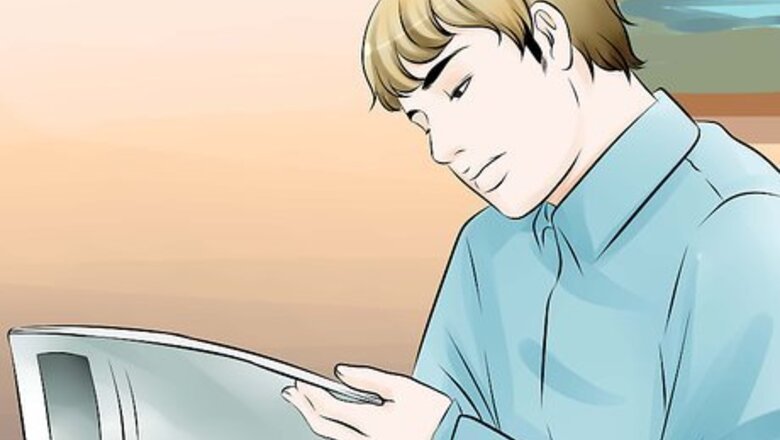
views
Laying the Groundwork

Start early. Don’t wait to study until the night before a big exam! Particularly with a subject such as English literature, where you will probably be asked analytical questions as well as content questions, you must have time to familiarize yourself with some of the complexities of your material. Being able to summarize the plot or name some characters is unlikely to be all you’ll need to do.
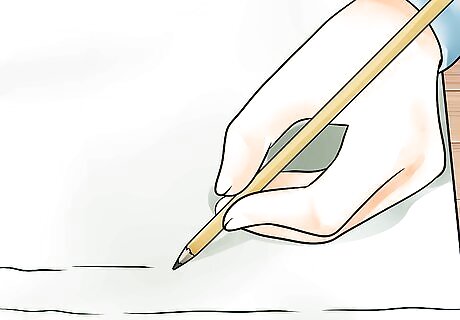
Examine what you already know. Write out all the details you can remember from your first reading of the text, as well as anything you remember from your course lectures. Don’t “cheat” by looking at your notes or your text -- just write down what you are confident you remember. This will be your starting base and will reveal any gaps in your knowledge.

Consider whether there are literary terms you’re unfamiliar with. Many tests and exams in English literature want you to be familiar with some key terms, such as stanza, irony, alliteration, speaker, and figurative language. While you’re not likely to be expected to have comprehensive knowledge of literary terminology, understanding some of these key concepts will be important to your success. There are many guides available that can help you find definitions for important literary concepts, but here are a few crucial terms: A stanza is a poetic division of lines and is equivalent to the paragraph in prose writing. Usually, stanzas are at least three lines long; groups of two lines are usually called “couplets.” Irony at its basic level says one thing but means another, which is almost always the opposite of what is actually said. For example, a character who meets someone in a raging blizzard might say “Lovely weather we’re having, isn’t it?” This is ironic because the reader can see that it is clearly not lovely weather. William Shakespeare, Jane Austen, and Charles Dickens are famous for their use of irony.Do not confuse irony with misfortune, which Alanis Morissette’s song “Ironic” is culpable of: “a black fly in your chardonnay” is definitely unfortunate, but it’s not ironic. Dramatic irony occurs when the reader or audience knows important information that a character does not, such as the fact that Oedipus killed his father and will marry his mother. Alliteration is a technique used most often in poetry and plays; it is the repetition of the same initial consonants in multiple words within a short space. “Peter Piper picked a peck of pickled peppers” is an example of alliteration. A speaker usually refers to the person from whose point of view a poem is given, although it may also be used to refer to a novel’s narrator. Keeping the speaker separate from the author is important, especially in poetic dramatic monologues such as Robert Browning’s "My Last Duchess," in which a maniacal duke admits to having murdered his first wife. Obviously, it is the speaker, not Browning, who is saying these things. Figurative language is discussed in more length in Part 2 of this article, but it is the opposite of “literal” language. Figurative language uses techniques such as metaphor, simile, personification, and hyperbole to make a point more vividly. For example, in Shakespeare’s play Antony and Cleopatra, Cleopatra describes Mark Antony this way: “His legs bestride the ocean. His reared arm / Crested the world.” This is hyperbolic language: obviously Antony’s legs didn’t literally straddle the ocean, but it powerfully conveys Cleopatra’s high opinion of him and his power.
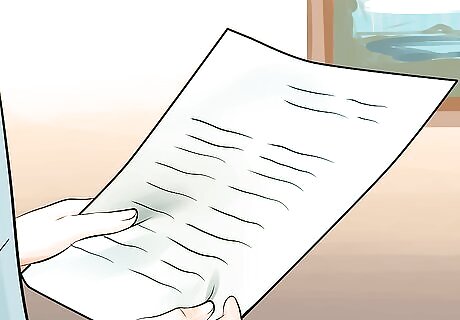
Look at sample questions, if you can. If you were given a study guide or sample questions, see how much of this material you are already familiar with. This will help you zone in on what needs more work and make a study plan.
Re-reading Your Texts
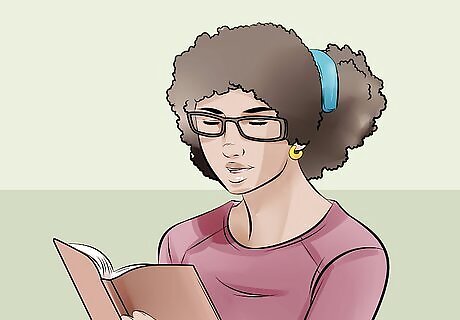
Re-read your text. You should have already read the text for class, but if you’re studying for an exam, make sure you go back and re-read it to catch things you missed out on the first time.

Look for figurative language. Many authors use techniques such as metaphors, similes, and personification to emphasize their points. These may be crucial to understanding the literary work you’re reading: for example, knowing that the white whale in Moby-Dick represents (among other things) Captain Ahab’s hubris is essential to being able to understand Melville’s novel. Metaphors make direct comparisons between two seemingly dissimilar things. They are stronger than similes. For example, the last line of F. Scott Fitzgerald’s novel The Great Gatsby is a famous metaphor comparing human lives to boats trying to make progress against a strong current: “So we beat on, boats against the current, borne back ceaselessly into the past.” Similes also make comparisons, but they don’t directly state that “x” is “y”. For example, Margaret Mitchell uses a simile to describe Scarlett O’Hara’s interest in Ashley Wilkes with a simile in her novel Gone With the Wind: “The very mystery of him excited her curiosity like a door that had neither lock nor key.” Personification occurs when a non-human animal or object is given human characteristics in order to express an idea more powerfully. For example, Emily Dickinson frequently uses personification in her poems, as in this poem about a snake: “A narrow fellow in the grass / occasionally rides; / You may have met him, -- did you not, / His notice sudden is.” Here, the snake is a “narrow fellow” who “rides” in the grass, which makes it seem almost like a dashing Victorian gentleman, rather than a reptile.

Consider the structure of your text. The way that an author expresses her or his ideas is often as important as the ideas themselves. In many cases, the form and structure of the text will have some kind of influence on its subject matter. If you’re reading fiction, think about the order in which the events are recounted. Are there flashbacks or places in the narrative that cycle back in time? Sandra Cisneros’s novel Caramelo begins close to the end of the actual “story” and switches between various times and places in order to emphasize how complicated family histories are. If you’re reading poetry, think about the form of the poetry. What type of poem is it? Is it something formally structured, like a sonnet or sestina? Is it free verse, which makes use of elements such as rhythm and alliteration but doesn’t have a set rhyme scheme? The way the poem is written will often offer clues as to the mood the poet wanted to convey.

Think about character archetypes. An archetype is usually a character -- although it may also be an action or situation -- that is believed to represent something universally recognized as part of human nature. The influential psychologist Carl Jung argued that archetypes tap into the “collective unconscious” of humanity, and thus we recognize experiences we’ve shared with others in archetypes. Several types of of literature analysis have been influenced by Jung, so being familiar with some archetypes that may appear in your text will probably be useful. The Hero is a character who embodies good and often fights against evil in a struggle to bring justice or restore order. Beowulf and Captain America are perfect examples of the Hero archetype. The Innocent Youth is a character who is usually inexperienced, but whom others like because of the faith s/he has in other people. For example, Pip in Charles Dickens’s novel Great Expectations is an Innocent Youth, as is Luke Skywalker from Star Wars. Often, these archetypes will experience some sort of “coming of age” in later parts of the story. The Mentor is tasked with caring for or protecting the main character through wise advice and assistance. Gandalf in J.R.R. Tolkien’s Lord of the Rings and The Hobbit is an excellent example of a Mentor archetype, as is Obi-Wan Kenobi from the Star Wars movies. The Doppelganger is a character who doubles for the main character in order to represent the “dark side” of the hero or heroine. Common examples of doppelgangers include Frankenstein and his Creature in Mary Shelley’s Frankenstein and Dr. Jekyll and Mr. Hyde in Robert Louis Stevenson's' novel of the same name. The Villain is a character with evil plans whom the hero must oppose. The villain will usually do anything to defeat the hero and is often, though not always, clever. Good examples include Shere Khan from Rudyard Kipling’s The Jungle Book, Smaug the Dragon from The Hobbit, and the Joker from the Batman comics and films.
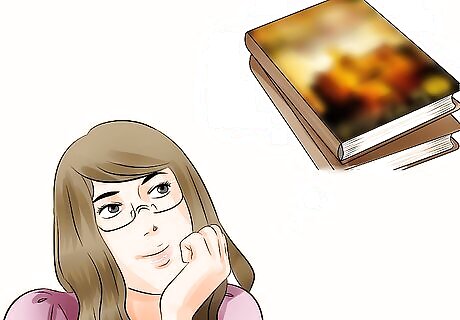
Think about situational archetypes. The other main type of archetype you’ll probably encounter is situational, i.e., a very familiar and expected type of plot and progression. Some common situational archetypes include: The Journey. This is an incredibly common archetype and is referenced in everything from stories of King Arthur to Jonathan Swift's Gulliver’s Travels to Tolkien's Lord of the Rings. In this archetype, the main character undertakes a journey -- physical or emotional, literal or figurative -- to understand something about herself/himself or the world around her/him, or to achieve an important goal. Often, the journey is very important to the plot, as with the Fellowship’s quest to destroy Sauron’s One Ring in the Lord of the Rings. The Initiation. This archetype has similarities with the Journey, but the focus is more on the hero/heroine’s developing maturity through their experiences. This type of story may also be called a ‘’bildungsroman.’’ Henry Fielding's Tom Jones is an excellent example of this, as are the origins of most comic book heroes (for example, Peter Parkers lessons about how to handle “great power and great responsibility” as he becomes Spiderman). The Fall. This is another very common archetype. In this archetype, the main character experiences a fall from grace as the consequence of her/his own action. Examples of this archetype are all over classic literature, including King Lear from Shakespeare’s play King Lear, Ahab from Melville's novel Moby-Dick, and Satan from John Milton’s epic poem Paradise Lost.
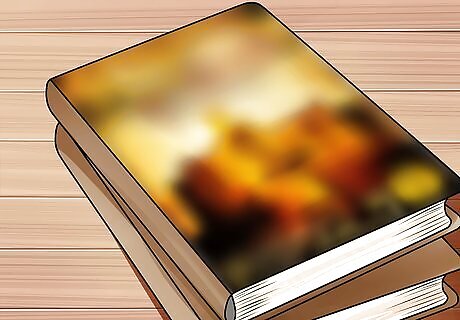
Consider how action develops from conflict. For many texts, particularly plays and fiction, there is an “inciting incident” that sets the main action of the story in motion. This moment disturbs the equilibrium of the situation, poses a problem, and sets off a series of events that will form the rest of the story. For example, in Shakespeare’s Macbeth, Macbeth hears a prophecy from a trio of witches that says he will become King of Scotland. While he has never wanted to be king until this moment, the prophecy sets him on a path of ambition and murder that eventually leads in his downfall. As another example, in Arthur Miller’s play The Crucible, a group of young girls face a conflict: they’ve been caught doing naughty things in the woods and face punishment. To try to cover up their actions, they accuse their fellow villagers of witchcraft. This action incites the rest of the play’s story, which follows these accusations as they spin out of control.
Making Useful Notes for Fiction and Drama
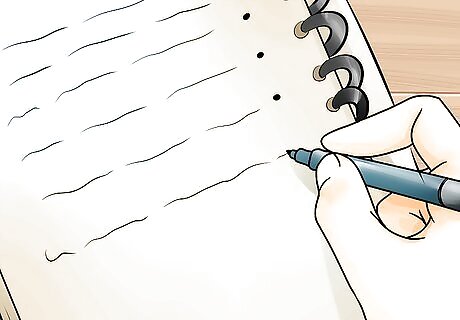
Summarize each chapter or act in bullet points after you read through the text for the second time. This will make future review easier, as you will have a rough summary to work from. Don’t get too bogged down in summary. You don’t have to summarize every little thing that happens in a chapter or act. Aim to note the main action of each one, as well as any important character or thematic moments.
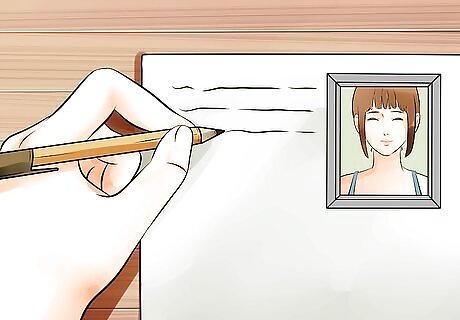
Make out character profiles for each main character. Include anything important that the character says or does, along with links to other characters in the text. For plays, you may want to note any speeches that seem particularly important, such as Hamlet’s “To be or not to be” speech or the “attention must be paid” speech from Arthur Miller’s Death of a Salesman.

Outline any problems the characters face. This can often be even more helpful than chapter summaries. What challenges and conflicts do the main characters face? What are their goals? For example, Shakespeare’s Hamlet has several problems he needs to solve: 1) Is the ghost of his father urging him to seek revenge trustworthy? 2) How can he take revenge on his uncle in a court full of people who are watching his every move? 3) How can he overcome his natural tendency to overthink things to work up the courage to take the revenge he wants?
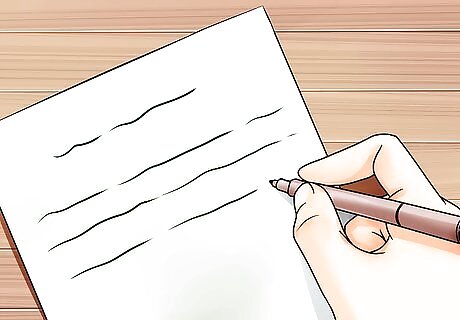
Determine whether these problems are solved. Sometimes, problems are solved fairly neatly at the end of a story: the Death Star is destroyed in Star Wars, the One Ring is destroyed and Aragorn restored as King in Lord of the Rings. Sometimes, problems are solved but not in ideal ways: for example, Hamlet does achieve his revenge and fulfill the ghost’s request, but he also kills several innocent people along the way and ends up dead himself. Understanding whether characters achieved their goals, or why they didn’t, will be useful in discussing the works in your exam.
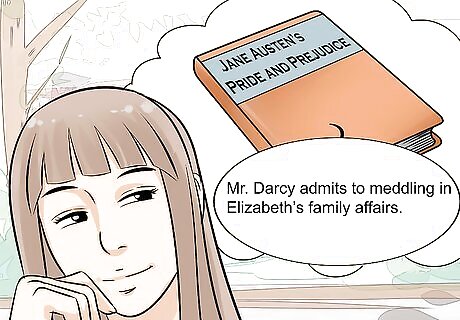
Remember some important statements made. While you don’t necessarily need to memorize important statements or speeches, remembering what they’re generally about can be very helpful when you go to make an argument about a text. For example, if you’re studying Jane Austen’s Pride and Prejudice, remembering that Mr. Darcy admits to meddling in Elizabeth’s family affairs will be useful in explaining why they are so angry with each other early in the book (i.e., he is too proud to admit that meddling really was wrong, and she is too prejudiced to admit he might have had motivations that made sense).

Make more detailed notes, including main themes in the text and how each character is important in the text. Don’t skimp on detail here! Noting that “the tone of Mary Shelley’s Frankenstein is very sinister” won’t be much use in the exam if you don’t have a way to describe what’s making it feel sinister. Write down particularly vivid moments from the text. Not only can these help you remember what happened in a chapter, they will give you evidence to use when you make claims about the text in your exam. For example, consider this quotation from Chapter 41 of Herman Melville’s Moby-Dick, when Ahab has finally caught up with the White Whale: “He [Ahab] piled upon the whale’s white hump the sum of all the general rage and hate felt by his whole race from Adam down; and then, as if his chest had been a mortar, he burst his hot heart’s shell upon it.” This is far more evocative than simply saying “Ahab attacked the whale.” This passage emphasizes that Ahab is after the whale not just for taking his leg, but because he’s come to embody every single horrible thing that has happened to humans since time began in this whale, and he is willing to destroy himself -- it’s as if his chest is a cannon, remember, with a cannonball exploding from it -- to take the whale down.
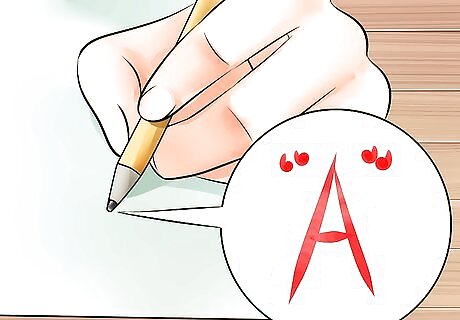
Write down any symbols in the text and where they appear. Symbolism is a favorite tool of authors. If some element, such as a color or specific item, shows up more than once or twice, it’s likely to be a symbol that represents something important. For example, in Nathaniel Hawthorne’s novel The Scarlet Letter, the “A” that Hester Prynne must wear in punishment of her adultery is an obvious symbol, but her daughter Pearl also serves as a symbol. Like the “A,” Pearl is a reminder of her adultery, a “token of her shame.” Hester often dresses Pearl in beautiful gold and red dresses, physically linking her to the letter and to Hester’s crime.

Look up contemporary connections. It is often very helpful to be able to reference in your exam or essay some important cultural or social issues that were relevant at the time a text was first written. Use any course material you have, along with introductions to critical editions of the text and reliable resources such as those found through a library database to do a bit of research. Do not rely on websites such as wikipedia or your own knowledge of a period, as both of these may be incomplete or inaccurate. For example, if you are studying Charlotte Perkins Gilman’s short story "The Yellow Wallpaper," it’s important to be able to speak about the condition of women in the late 19th century. Gilman was a very important feminist writer who wrote against the traditional social structure of her time, which insisted that a woman’s only place was as a wife and mother. Importantly, her arguments usually insisted that this structure harmed men as well as women -- something that is very useful to bring up in a discussion of her fiction, and something you might not know if you were only acting on “common knowledge” of the era.
Making Useful Notes for Poetry
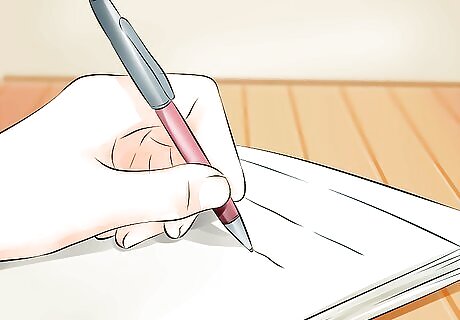
Note what type of poem you’re dealing with. Sometimes, knowing the type of poem you’re studying, such as whether it’s a sonnet or sestina or haiku, can be very important to being able to discuss its meaning. You can often determine what type of poetry you’re dealing with by examining the rhyme scheme (the pattern of rhymes at the end of each line) and the meter (the number of poetic “feet” each line has). For example, Edna St. Vincent Millay tackles how difficult it is to write poetry in her poem “I Will Put Chaos into Fourteen Lines.” Knowing that this poem is a sonnet about writing sonnets helps explain part of what the poem’s goal is: putting a little modern “chaos” into a very old and established poetic form. Recognizing that Millay uses a classic Petrarchan rhyme scheme and that many of the lines are in iambic pentameter (meaning they sound like “ta-TUM ta-TUM ta-TUM ta-TUM ta-TUM”) will help you identify the poem as a sonnet. Many modern poets write in free verse, but this doesn’t mean they aren’t also paying close attention to the form of their poetry. Look for elements such as alliteration, assonance, repetition, enjambment (the breaking of poetic lines), and rhythm in free verse poetry just as you would in more formally structured poetry.
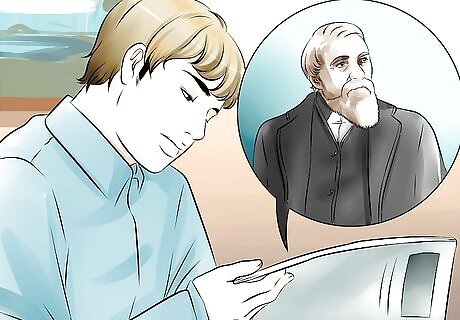
Identify the speaker and the audience of the poem, when possible. This is particularly important for poems such as dramatic monologues, where the speaker is definitely ‘’not’’ supposed to be the poet. Felicia Hemans, Robert Browning, and Alfred, Lord Tennyson all wrote dramatic monologues from the points of view of characters very different than themselves. Identifying the speaker can be trickier in lyric poetry, such as the type written by poets like Wordsworth or John Keats, because these poems are often written in first-person but don’t make a clear distinction between the speaker and the poet. Nevertheless, even in poems that are written using first-person pronouns like “I”, always refer to the speaker as the speaker, not the poet.
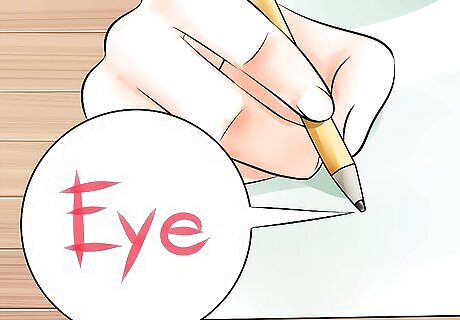
Write down any symbols in the poem and where they appear. Just as with prose writing, symbolism shows up all the time in poetry. Be on the lookout for repeated elements, especially things like colors or natural imagery. For example, in William Wordsworth’s poem “Tintern Abbey,” the eye is an important symbol that represents many things, including the poet’s imagination. Wordsworth will often play on the similarity of sound between I and eye, further relating the two concepts. Symbolism is all over the place in the Anglo-Saxon epic poem Beowulf. One key symbol is the hall of Heorot, King Hrothgar’s great golden mead-hall. Heorot symbolizes community, bravery, warmth, safety, wealth, and civilization, so when Grendel invades Heorot and murders warriors in their sleep there, he’s violating everything about the Scyldings’ lives.

Remember that you don’t have to memorize poems you’re studying. Just make sure you know the basics such as structure of the poem, themes, and overarching idea or story. It can sometimes be helpful to memorize a key line or two from a poem so that you can use it as evidence. For example, if you’re studying Walt Whitman’s huge poem Leaves of Grass, you might want to memorize the short phrase “dismiss whatever insults your own soul; and your very flesh shall be a great poem.” This short quotation encapsulates much of the meaning from the larger text, and being able to drop it into an exam will help you support your claims.
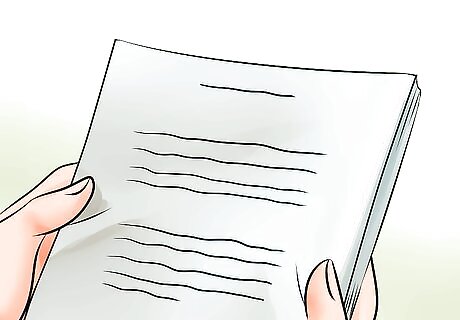
Look up context for your poems. Context is just as important for poetry as it is for fiction or drama. Knowing what types of issues the poet may have been addressing can help you understand the goal of the poetry. Contextual information can also be useful in keeping you from making incorrect statements about poems. For example, it’s important to know that Shakespeare’s sonnets are not all written to female lovers, even though that was the standard for sonnets of the era. In fact, most of them are written to a “fair youth,” a wealthy young man to whom the poet has some sort of deep, possibly romantic, attraction.
Handling Difficult Texts
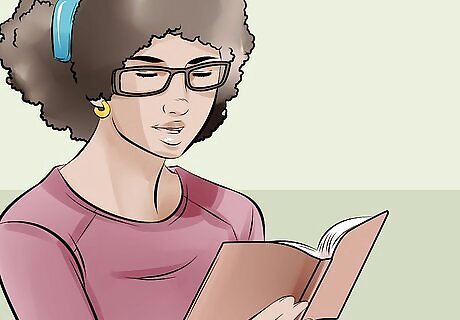
Re-read passages you don’t understand. Particularly in poetry, authors may use language unconventionally in order to make a more powerful impact on the reader. This can be confusing at first, but re-reading the passage slowly and carefully will reward your attention. Look for footnotes and other aids. Often in books edited for a student audience, the editors will include explanatory footnotes, word definitions, and other aids that can help you grasp what’s going on. Don’t ignore these! They can really help clear up confusing passages. Try listening to the audio version of the text, as this can help you retain the information in a new and fun way.
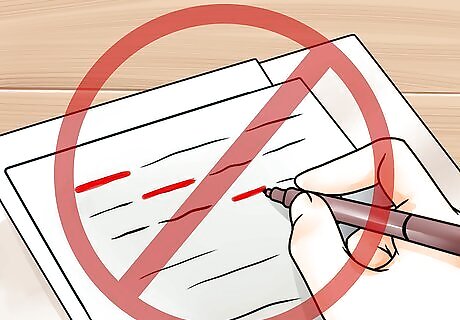
Avoid skimming material. Especially if you’re reading poetry or plays, reading everything is very important. Skipping things such as stage directions in a Shakespeare play can mean you miss out on crucial information. Language in poems is precisely chosen and structured to have a particular effect, so missing even a word or two could damage your understanding of the whole text.

Read passages aloud. This technique works especially well with poetry and plays, but it can also work for long, dense passages of prose in a novel, especially if it’s something like a Charles Dickens novel where sentences can run to a full paragraph. Reading the language aloud will help point out elements such as rhythm, alliteration, and repetition, which are all things that your exam may ask you to speak about.
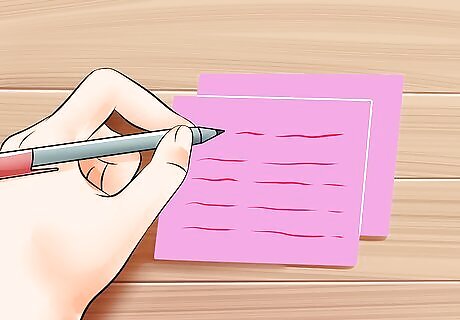
Make flash cards. If you’re having trouble remembering things, make yourself some flash cards. Sometimes, the transfer of material from one medium to another (e.g., from written notes to flash cards) will help you learn it more effectively. Flash cards are especially helpful for memorizing things such as literary terms and character names. They may be less helpful for remembering more complex information.




















Comments
0 comment